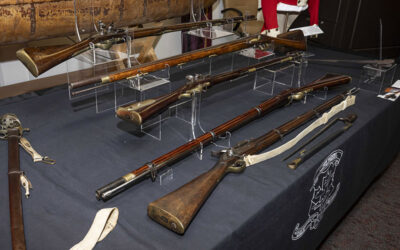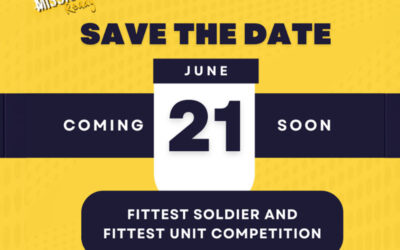History of the Battle of Britain
Defence News
The Battle of Britain, says Canadian historian Hugh Halliday, “represented the first commitment of the Royal Canadian Air Force to combat in [the Second World War], although the Canadian role was small compared to future operations”.
The summer of 1940 was a dark time for the Allied Forces during the Second World War. A large portion of continental Europe had fallen to the Nazis and Hitler was preparing to launch a full-scale invasion of Great Britain. But first, he needed to dominate the airspace over the English Channel. To do so, his Luftwaffe (air force) needed to destroy the Royal Air Force (RAF).
Prelude to the Battle of Britain
With shocking rapidity, Hitler’s military machine had overrun France. The Battle of France began on May 10, 1940 with the invasion of the Netherlands and Belgium; Poland, Denmark and Norway had already fallen.
Within three days, the German forces crossed into France and by the end of May French and British forces had been pushed back to the English Channel. It was then that the “Miracle of Dunkirk” occurred; between May 27 and June 4, more than 300,000 men escaped from France, taken off the beaches of Dunkirk by naval ships and civilian boats of all shapes and sizes that ferried back and forth between England and France.
The amount of materiel that the army had been forced to abandon at Dunkirk meant that they now faced a substantial shortage in fighting equipment. “The RAF were successful in keeping the majority of German bombers and fighting away, shooting down 150 aircraft,” states the RAF Battle of Britain website. “However, they lost 100 precious fighters and 80 irreplaceable pilots.” These losses added to the perilous situation in which the Allies now found themselves.
On June 14, Paris fell and eight days later France signed an armistice with Germany.
A few days later, Winston Churchill, the newly-elected Prime Minister of Great Britain, spoke in the British House of Commons about the dire situation facing the Allies:
The Battle of France is over. The Battle of Britain is about to begin. … Hitler knows that he will have to break us in this island or lose the war. Let us therefore brace ourselves to our duties, and so bear ourselves that, if the British Empire and its Commonwealth last for a thousand years, men will still say, “This was their finest hour.”
Directive 16
“Operation Sea Lion (Seelöwe), the plan for the invasion of Great Britain, was conceived hastily and belatedly,” says Mr. Halliday. “Following the Dunkirk evacuation and the capitulation of France in 1940, Hitler expected Britain to face facts and sue for peace. However, when days passed and no indication came from Britain that they were willing to sue for peace or even negotiate, Hitler decided to launch Operation Sea Lion. Only on July 16, 1940, did he issue Directive No. 16, which itself was couched in hesitant terms.”
“Since Britain still shows no sign of willingness to come to an agreement in spite of her hopeless military situation, I have decided to prepare and, if necessary carry out, a landing operation against England,” Hitler said. “The purpose of this operation will be to eliminate the English homeland as a base for continuation of the war against Germany and, if necessary, to occupy it completely.”
The directive also said that “the British Air Force must be eliminated to such an extent that it will be incapable of putting up any sustained opposition to the invading troops”.
“For the Germans to invade, the [German] navy must dominate the Channel. But before it could do that the Luftwaffe must dominate the air over the channel. … it must gain control of the airspace over northwest France and the Low Countries, the Channel, and southeastern England,” explains Canadian historian Dr. James L. Stokesbury.
“The problems faced by both sides were enormous, and they had never been faced before. Never in history had one nation tried to defeat another from the air. The whole Battle of Britain was so new, and in the end such a near-run thing, that it is probably the most tantalizing of all the single episodes of World War II.
“Neither the British nor the Germans knew what was going to happen. No one even knew what it would take to achieve the kind of conditions desired,” Dr. Stokesbury continues.
Phase I – The Channel Battles (Kanalkampf) [1]
Phase I of the battle began on July 10 and lasted for a month. During this time, the Luftwaffe attacked convoys in the English Channel and Channel ports. They also began attacking radar stations on the south coast of England.
Phase II – Eagle Attack (Adlerangriff)
Phase II, the main assault, was marked by further attacks on radar positions and massive attacks against airfields to destroy Great Britain’s fighter capability in the air and on the ground. In particular, the airfields of 11 Group, located in the southeast of England, came under fire. The only Royal Canadian Air Force squadron in the Battle – No. 1 (Canadian) Squadron, later renamed 401 Squadron – was part of 11 Group.
The launch of the main assault took place on August 13, called Eagle Day (Adlertag) by German High Command. The previous day the Luftwaffe heavily damaged but did not destroy the southern chain of radar stations. On Adlertag, “the Luftwaffe came out in force, hitting radar stations, airfields, and aircraft factories,” says Dr. Stokesbury. “They flew almost fifteen hundred sorties, and the British responded with about seven hundred.”
On August 20, as Adlerangriff was in full flight, Churchill delivered his speech praising the airmen fighting the Battle in words that have echoed through the decades:
The gratitude of every home in our island, in our Empire and indeed throughout the world, except in the abodes of the guilty, goes out to the British airmen who, undaunted by odds, unwearied in their constant challenge and mortal danger, are turning the tide of the world by their prowess and their devotion.
Never in the field of human conflict was so much owed by so many to so few.
All hearts go out to the fighter pilots, whose brilliant actions we see with our own eyes day after day…
Listen to the above words of Churchill (mp3 667 kb)
The attacks continued throughout the month and into September and, according to the RAF website, “the situation in 11 Group became desperate,”.
However, the Germans “decided that their attacks on the radar stations were not paying off – just as they were beginning to – and they discontinued them, another in their chain of fatal mistakes,” notes Dr. Stokesbury.
Phase III – The Blitz
On August 1, 1940 Hitler issued Directive No. 17, which said that “the war against England is to be destructive attacks against industry and air force targets…” However, he said, “I reserve to myself the right to decide on terror attacks as measures of reprisal” – i.e., attacks against civilians.
Later in the month, when it appeared that the Luftwaffe was winning, the Battle of Britain took another unexpected turn.
There had already been some bombing of military locations on the outskirts of London and the docks. However, on the night of August 24-25 a Luftwaffe aircraft mistakenly dropped its bombs on the city of London. In retaliation, more than 80 British bombers raided Berlin. As the bombing of Berlin continued, a furious Hitler rescinded Directive 17, ordering “disruptive attacks on the population and air defences of major British cities, including London, by day and night”.
The Blitz, which lasted for 57 nights, began on September 7, and the Battle of Britain began to swing in favour of the British. “In a contradictory way, it was just what the British needed. London was like a vast sponge, and it absorbed damage as a sponge does water,” says Dr. Stokesbury.
The shift in targets gave 11 Group in southeast England a chance to repair their airfields and radar sites. As well, the German raids heading for London were now within striking range of 12 Group, located in the Midlands and East Anglia.
Sunday, September 15 was the high point of the battle according to most – and is now celebrated as Battle of Britain Day. The Germans launched a massive attack on London by 123 bombers escorted by more than 650 fighters. The Luftwaffe suffered huge losses but were back again the next day. The fighting was fierce, but ultimately the Allied airmen were victorious.
Twelve days later, the Luftwaffe made one last major effort to bomb London by day. Henceforth bombing raids would be by night, and “any serious aerial fighting to be done during daylight hours would have to take place over occupied Europe,” says the Official History of the RCAF.
The Luftwaffe had clearly failed to destroy the Royal Air Force; two days later, Hitler announced the postponement of Operation Sea Lion and partially dispersed the invasion fleet.
Phase IV – The End of the Battle
The Battle of Britain continued with Luftwaffe heavy bomber raids against cities and nuisance raids against towns and military targets, but the Germans had lost the initiative. After mid-September raids were of much lesser scale, especially as the weather began to worsen.
On October 12, Hitler “formally advised his service chiefs that Operation Sea Lion had been put off to the spring of 1941. In fact, he had already turned his thoughts and energies eastwards – towards Russia – and would never return to Sea Lion,” says Mr. Halliday.
By the end of October the Battle of Britain was over; as some historians say, it simply “petered out”.
The Blitz continued in an effort to destroy Britain’s will to fight. For 57 consecutive nights, bombs rained down on London and the British suffered nine months of aerial bombardment of their cities.
“It would be misleading to say that RAF Fighter Command ‘defeated’ the Luftwaffe in the Battle of Britain. As of late October 1940 both sides actually had more aircraft and pilots than they had possessed in early August. Yet it was an RAF victory in that the enemy was denied his objective – obliteration of British air defences, rendering impossible any air attacks on invasion forces,” says Halliday.
“Yet, like the Battle of Waterloo, the Battle of Britain was a ‘near-run thing’. … By early September [the Luftwaffe] had come dangerously close to [gaining air superiority over the intended invasion areas]. That the enemy failed was due in large measure to their overestimation of the damage they were causing and frequent changes in plans,” he concludes.
Canadian Contribution
The airmen whom Prime Minister Churchill dubbed “the few” comprised 2,353 pilots and air crew from Great Britain and 574 from overseas. All flew at least one authorized operational sortie with an eligible unit of the Royal Air Force or Fleet Air Arm from July 10 to October 31 and were awarded the Battle of Britain clasp to the 1939-45 Star.
Participants included Poles, New Zealanders, Canadians, Czechs, Australians, Belgians, South Africans, French, Irish, Americans as well as a Jamaican, a Southern Rhodesian and a flyer from the Palestinian Protectorate.
Five hundred and forty-four lost their lives.
More than 100 Canadians are deemed to have participated in the Battle of Britain, and 23 lost their lives. A Royal Canadian Air Force squadron fought during the Battle; No. 1 (RCAF) Squadron, whose pilots were from both a regular force unit and an auxiliary unit, became operational on August 17, 1940. It was known as “RCAF” to distinguish itself from the RAF’s No. 1 Squadron but in February 1941 it was designated 401 Squadron.
Three members of No. 1 (RCAF) Squadron received the Distinguished Flying Cross for their efforts during the Battle of Britain: the commanding officer, Squadron Leader Ernie McNab; his second-in-command, Flight Lieutenant Gordon Roy McGregor; and Flying Officer “Dal” Russel.
Canadians also fought in the RAF’s 242 (Canadian) Squadron, which was heavily, although not exclusively, Canadian. It was led by RAF Squadron Leader Douglas Bader during the Battle of Britain. (Squadron Leader Bader has gone down in Air Force history for losing both legs in a flying accident in 1931; he successfully re-enrolled in the RAF at the outbreak of hostilities and serving until 1946 – including being shot down, taken as a prisoner of war and even escaping from captivity once.)
Many more flew with other RAF squadrons – as well as Bomber and Coastal Commands providing support to operations to prevent the German invasion. An untold number served as groundcrew, keeping the fighters flying.
“Groundcrews who serviced No. 1 (Canadian) Squadron’s Hurricanes, sometimes under fire and routinely under pressure, received belated recognition in June 1942,” says Mr. Halliday, “when Flight Sergeant John R. Burdes was awarded a British Empire Medal and Flight Sergeant Cecil M. Gale was mentioned in dispatches.
“The citation to Gale’s award read, in part: ‘Working under trying conditions, he has maintained the squadron aircraft in a capable manner. Owing to the intense operational activity during the latter part of August and September, the flight maintenance crew was called upon to work to the limit. Flt. Sgt. Gale carried out his duties, often working from very early morning until late into the night, with a result that sufficient aircraft for flight use were available at all times.’”
Replacing experienced pilots throughout the Battle had been a significant challenge, especially in the early days of the Battle. Later in the Battle replacements became less of an issue, but the pilots became exhausted and replacements were less experienced.
The last 10 days of August, according to the Official History of the RCAF, “had cost Fighter Command 231 pilots or almost one-quarter of [Fighter Command’s] initial strength, and 60 per cent of those casualties were experienced flyers who could only be replaced by inexperienced graduates of Operational Training Units and as time wore on less and less experienced pilots were taking to the air. …as pilots gained practical experience they were likely to be killed, wounded, or mentally exhausted by the strain, or else promoted into other squadrons.”
The Battle of Britain would not have been won without the contribution of another Canadian: Max Aitken, Lord Beaverbrook.
Prime Minister Churchill appointed Lord Beaverbrook, a newspaper tycoon, as minister of Aircraft Production in May 1940. In a series of moves and innovations that upset the senior leadership at the Air Ministry, Lord Beaverbrook dramatically increased the production of fighters for the war effort. “He rode roughshod over all the happy dilatory routines of peace,” says Dr. Stokesbury. “Factory managers and senior air force officers alike came to hate him, but without him, or someone equally acerbic, it is hard to see how the British would have lasted through the summer. He provided a steadily increasing flow of aircraft, so that in spite of loses of well over 100 per cent of strength, the RAF still ended the battle stronger than it went into it.”
In the month before Lord Beaverbrook’s appointment, 256 fighters were produced. In the critical month of September, as RAF losses reached their height, his system produced 465 fighters.
And now, with the Nazi’s plan to invade Britain in tatters, another key Canadian contribution to the war in the air would begin to show its effect.
“As the Battle of Britain ended, the first young pilots, observers and gunners were emerging from the schools of the [British Commonwealth] Air Training Plan in Canada,” says Leslie Roberts, author of There Shall be Wings, “Soon their tide would be in full flood.”
Canadians who served
Determining exactly how many Canadians served in the Battle of Britain is challenging, to say the least. The numbers vary from 88 to 103 to 112, depending on which source one consults. Part of challenge “is in the accounting of the number of Canadians, because there’s a definitional problem [regarding] who was a Canadian in 1940,” says Dr. Steve Harris, National Defence’s chief historian.
All sources seem to agree, however, that 23 Canadians died during the Battle of Britain.
Related Stories
A Legacy Preserved: Donated Weapons Enrich NB Military Museum
Antique weapons used by the various New Brunswick military units during the 18th and 19th centuries were donated to the New Brunswick Military History Museum (NBMHM) on April 15, 2024, at 5th Division Support Base (5 CDSB) Gagetown. The donation included several...
SAVE THE DATE! GAGETOWN’S FITTEST SOLDIER AND FITTEST UNIT COMPETITION
21 June 2024 Are you ready? Mission: Ready Physical Fitness Working Group is hosting its third Fittest Soldier and Fittest Unit competition. WHAT? These are 2 separate events. Enter your TEAM of 4 including 1 OFFICER and 1 WOMAN for the Fittest Unit event. Units may...
Community Champions: Recognizing 5 CDSB Gagetown’s Volunteers
This National Volunteer Appreciation Week, 5th Canadian Support Base (5 CDSB) Gagetown would like to take this opportunity to celebrate the work of volunteers that help in the organization and conduct of various events on base. Volunteers at 5 CDSB Gagetown aide in...




